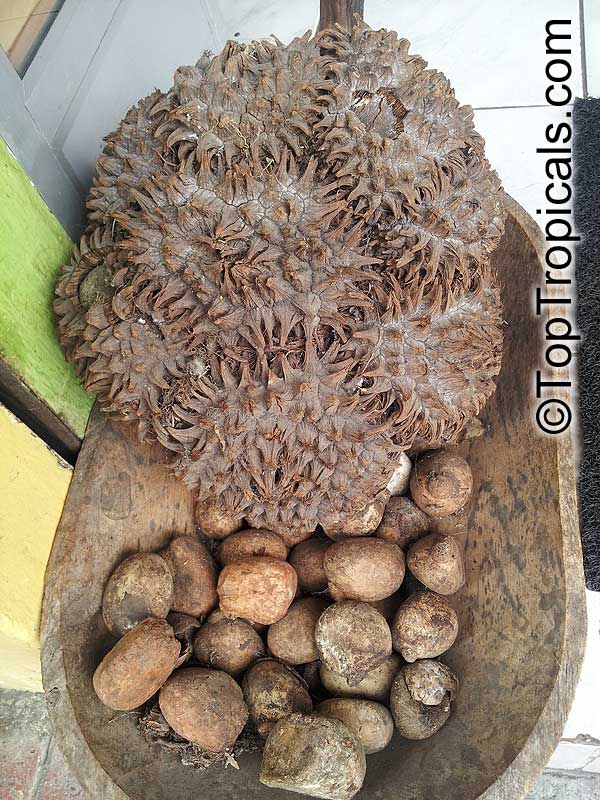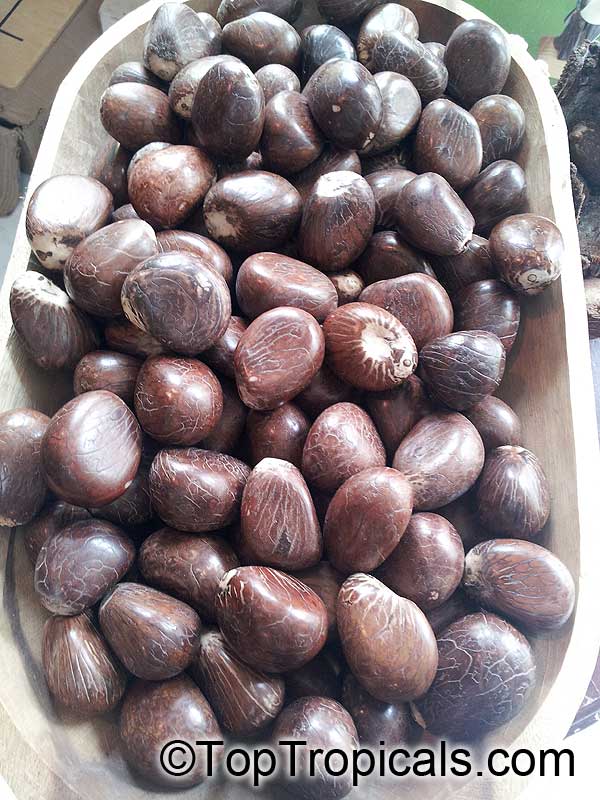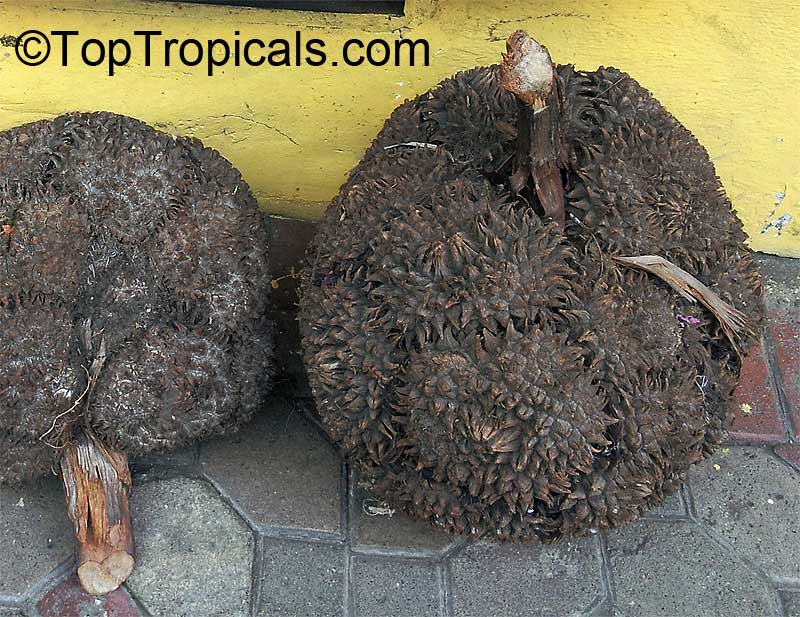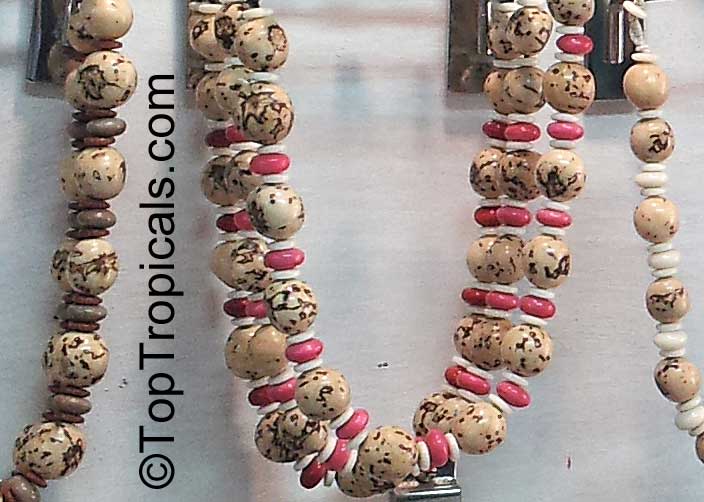Pictogram Guide · Mouse over pictogram for definition
Phytelephas sp.
Ivory-nut Palm, Tagua PalmFamily: Arecaceae / Palmae
Origin: South America






Phytelephas grows under large rain forest trees along streams and on wet hillsides. Large pinnate leaves up to 20 feet tall arise from a woody trunk that is often leaning or growing from a longer horizontal trunk above the moist ground. Female palms bear clusters of large, brown fruits, the size of grapefruits or melons. Each fruit is studded with numerous woody, pointed horns and contains four or more large seeds. The content of the immature fruit is a tasteless crystalline liquid. When it starts to ripen this turns into a sweet and pleasant milky substance, transforming later to a gelatinous viscous consistency and finally becoming an extraordinarily hard product similar in color, appearance and feel to natural ivory. When dried out, it can be carved just like elephant ivory; it is often used for beads, buttons, figurines and jewelry, and can be dyed.



